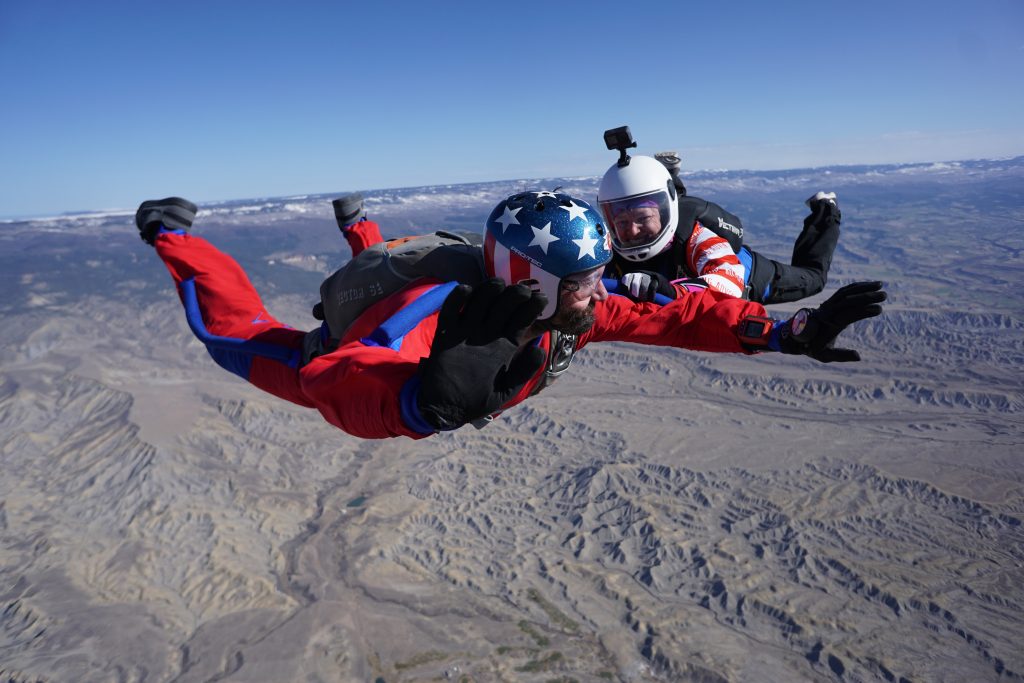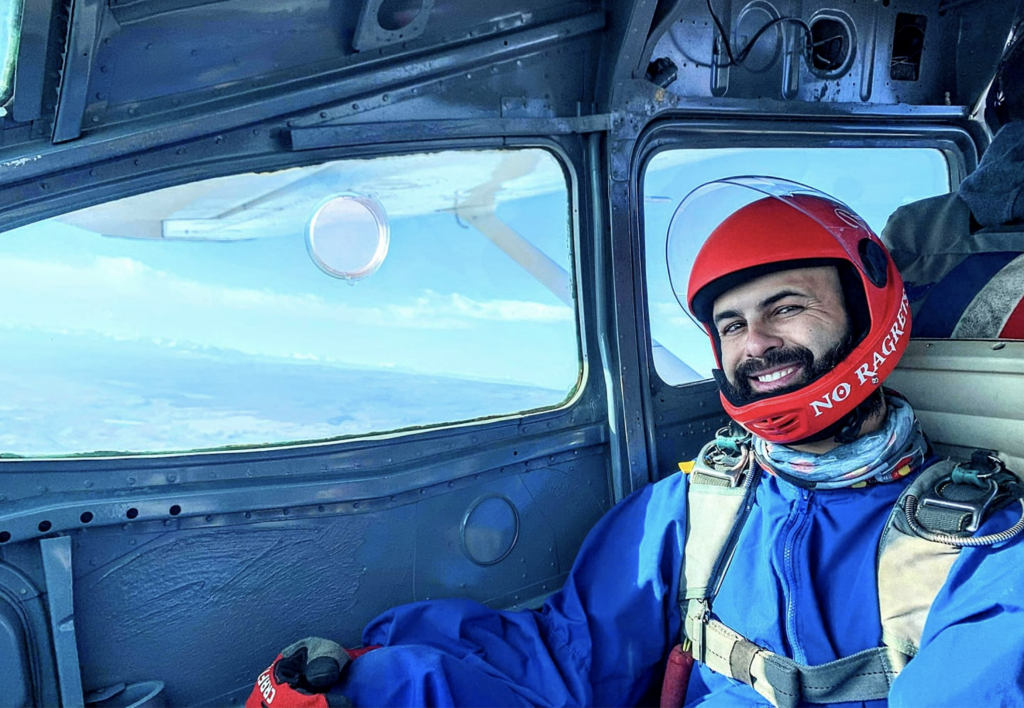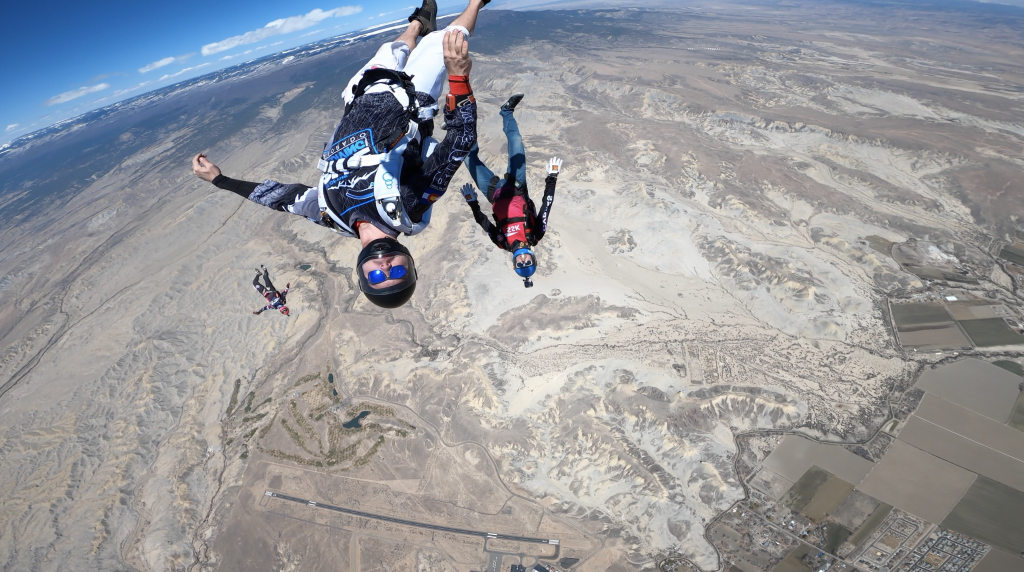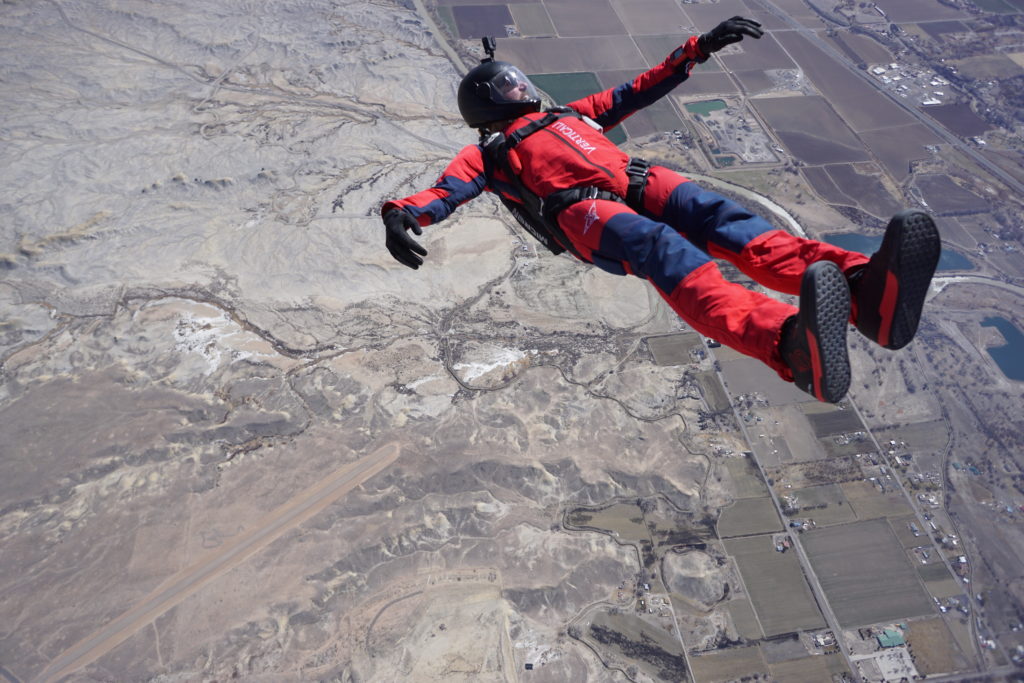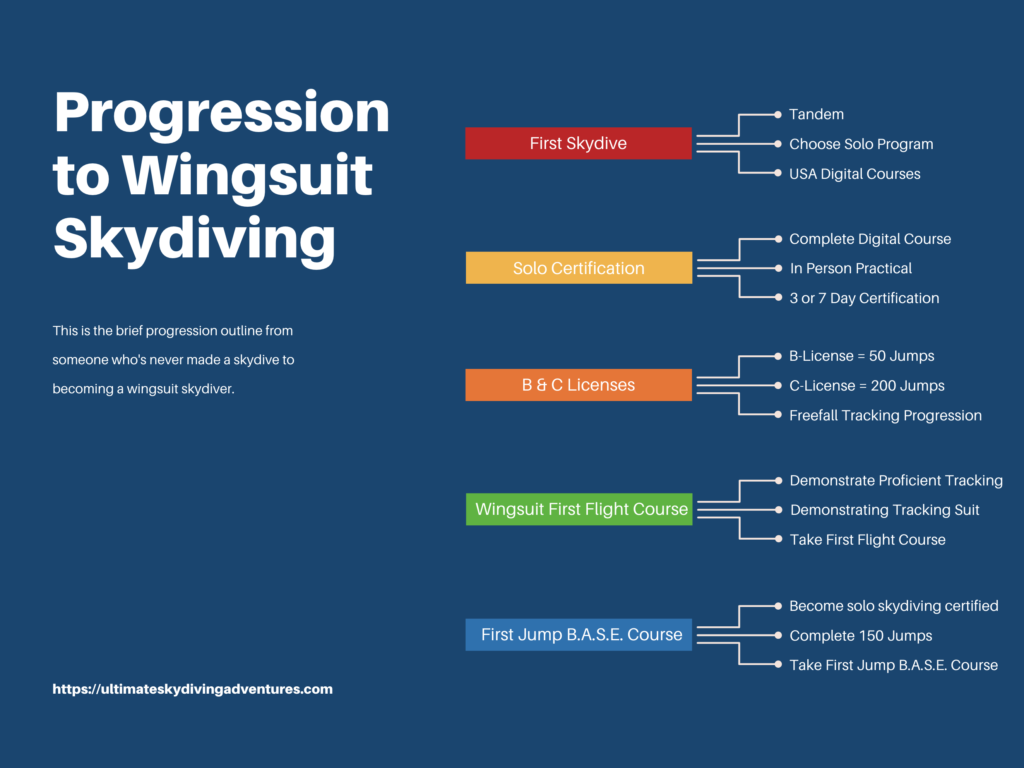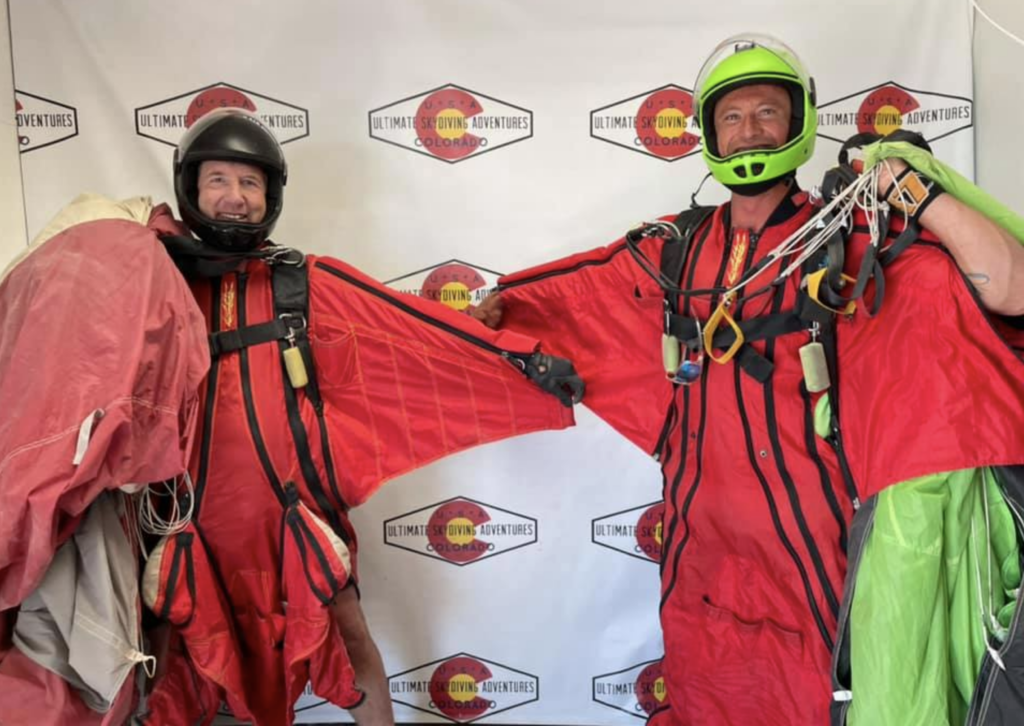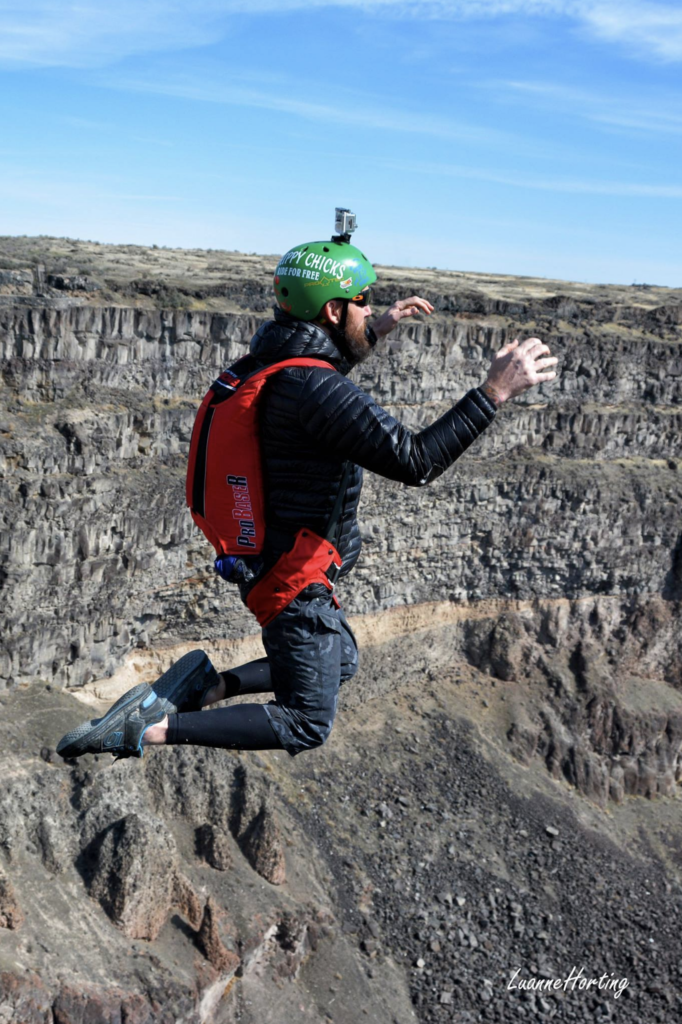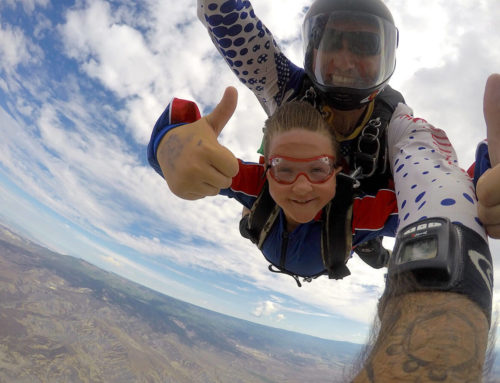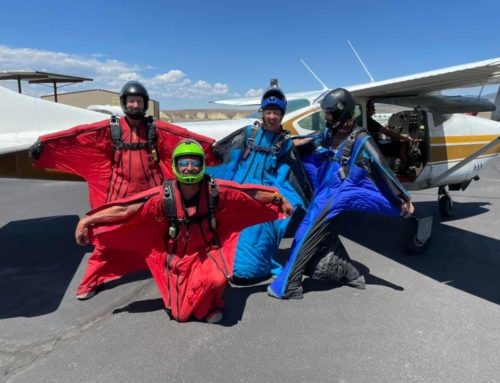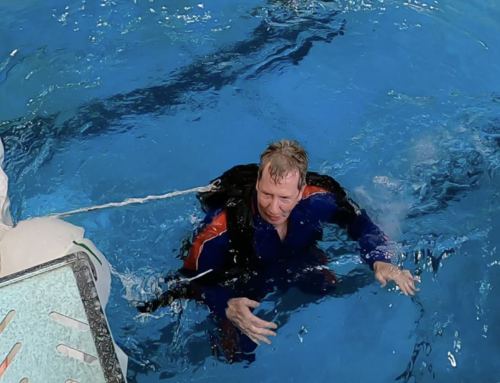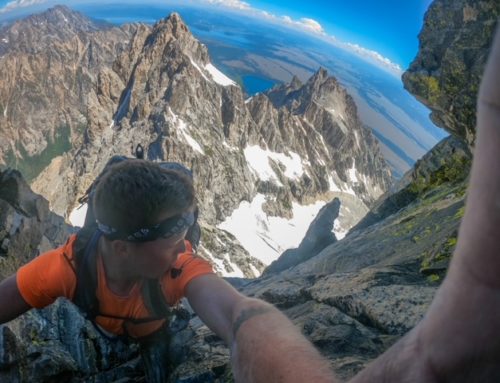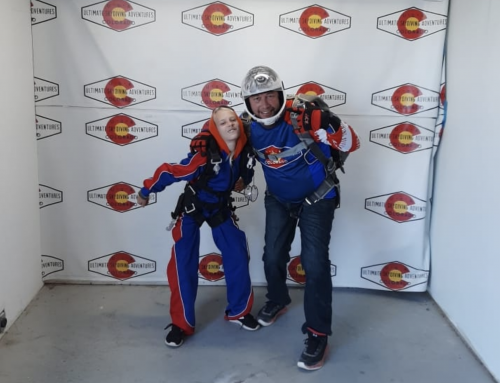We’ve found over decades of experience in the sport that after someone earns their initial certification, it’s a mystery of what steps to take next. This article’s mission is to unveil the mysteries and provide a comprehensive step-by-step guide on the entire process of becoming a wingsuit skydiver.
First Jump
Every Olympian, every world record holder, and every national champion all have one thing in common – they started by taking the very first step. Indeed it is a challenge as an adult to embark on a new journey, and to be new at something again. It’s easy to make all the excuses in the world not to start: it’s too expensive, now’s not the right time, it’s so crazy, my mom will disown me, what will my job think?
This is probably why all the greats have had their say about getting started:
“The first step is: you have to say you can,” Will Smith
“The first step is to establish something is possible. Then probability will occur,” Elon Musk
Can you imagine if those before us made the same excuses we have today? Where would the world be without the great innovation of electricity? Aircraft flight? And other modern technologies?
“A journey of a thousand miles begins with the first steps,” – Confucious
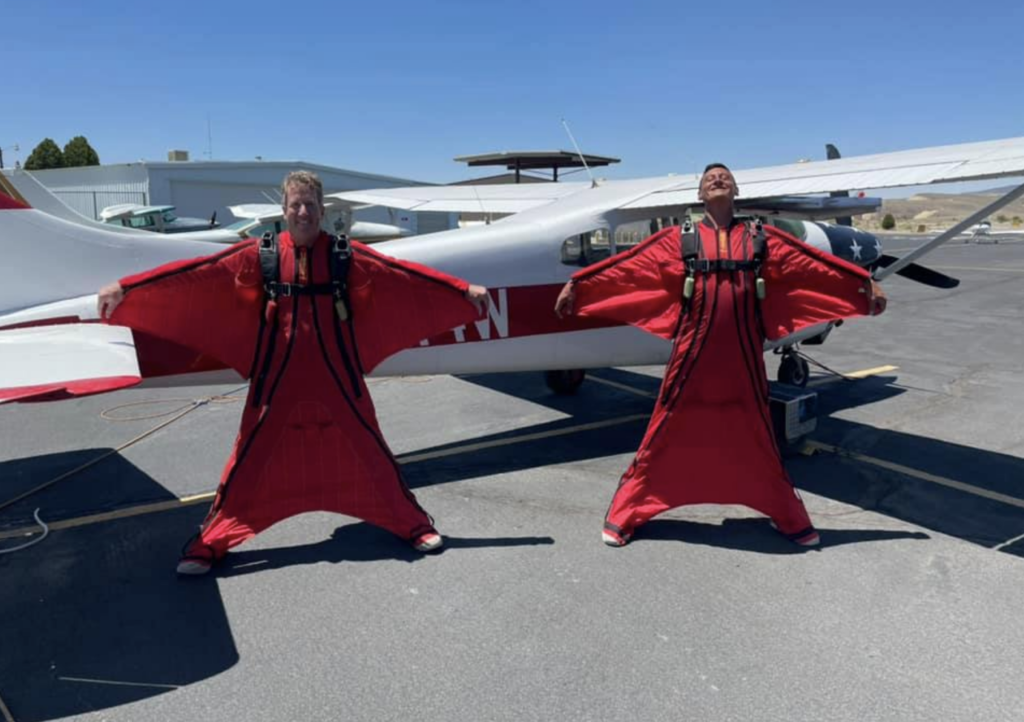
Every skydiver’s journey into the sport has one thing in common, they left the excuses at the door, and lived outside the boundaries of the norm – they, my friends, took the first step.
Maybe your next step is simply clicking HERE, then coming back to check in with this guide. Maybe some of you would like this comprehensive map so you can strategize finances and prioritize making the first step. Whichever path is right for you, you are in the right place getting started!
Solo Skydive Certification
Learning to solo skydive – in our humble opinion – is one of life’s greatest journeys! Everyone experiences skydiving differently, but phycology has shown that those who’ve conquered the fear of the opening door mid-flight above 10,000 feet, and purposely leaping out for joy, experience a sort of meditative state, and find it easier to deal with stressful situations of life.
Discover all the steps to earn your skydiving certification, the costs, time commitments, and health requirements to embark on the student skydiving program to become certified HERE.
The B-license
“Without dreams and goals, there is no living, only merely existing, and that’s not why we’re here.” – Mark Twain
In any country, there are national organizations that outline the progression of skydiving competency. Here are the countries in which you can be solo skydiving:
United States United States Parachute Association
Australia Australian Parachute Federation
United Kingdom British Skydiving Association
Canada Skydiving Parachute Association
French Federation of Parachuting
In the spirit of progression, we highly encourage goal setting as you progress. The initial certification is closely monitored by instructors until you’ve graduated. However, the next steps fall on your shoulders. For that, we’re here to help fill in the gaps and showcase what the B-License requirements entail, costs, the privileges of the B-License, currency requirements and more HERE.
Next steps: 50-200 jumps
This is a make-it-or-break-it-time for many new jumpers. You’ll begin to realize how skydiving will encompass many factors in your life. That’s why this map gives you a clear picture on goal setting, pacing your progression, and eventually earning the goal of wingsuit skydiving.
There is no particular path to follow in this stage, so we’ve created a robust outline with an emphasis on skills to help you become a well-rounded body pilot and prepare to jump a wingsuit.
Jumps 50-150
- Try a New Discipline: Freeflying
With a qualified mentor, coach or load organizer, experiment with the freefly discipline. This is a three-dimensional body position flying on your back, upright, and head down. This offers you an opportunity to learn a different axis of body flight to gain better body awareness that will benefit your wingsuiting skills.
- Continue Working on the B-License Requirements
Continue working on the B-license freefall and landing accuracy requirements that you can find HERE.
- Have Fun
Being a new jumper is about having fun learning a new skill, exploring what you like, and of course, having fun! Fun things to look forward to at this level….
- Hundy Undies – yes, you guessed it! Grab your friends and make your 100th jump wearing just your undies!
- Attend Events / Camps / Boogies – these are a great opportunity to see how other skydiving centers run, learn new things, progress your skills, and continue building your skydiving community!
- Become a USPA Coach – at 100 jumps you’ve earned the privilege of sharing your knowledge with others! See what it takes to become a skydiving coach HERE!
- Perfect your tracking skills – working on speed, flattening your angle of attack, levels, turns, and stability being mindful of other jumpers on the load. Also jumping in small groups to work on relativity as well as practicing the deployment sequence as you would for a wingsuit to develop muscle memory. Pro Tip: getting a coach helps accelerate this phase!
- Learn about wingsuit gear – the next step after this phase is utilizing the tracking suit and once you progress from there, you’ll need to learn about the different containers available for wingsuiting (such as one with dynamic corners), pilot chute size and bridle length and the FlySight (a GPS device used for skydiving)
Jumps 150-200
This is the phase where you move towards working on your next license which for the US, is the C-license. This encompasses working on group jumps which helps you progress your freefall skills that will translate to wingsuiting, as well as canopy landing accuracy which is fundamental for every skydiver.
Again, there is no defined path, so this is our suggested progression, which is the final leg towards the goal of learning to wingsuit skydive.
Jumps 150-199
- Working on C-License Requirements – don’t hold yourself back! You can start working on the freefall and canopy landing requirements for your C-license while you rack up your jump numbers. By doing this, you’ll be one step ahead by the time that magical 200 jump number arrives! See more here on how to earn your C-license!
- Level up your tracking skills – at this phase utilize a coach to understand more fundamental body control while tracking as well as learning better techniques for spotting, navigating, different body positions for exiting then progressing to barrel rolls while tracking and learning how to back track
- Try a New Discipline: Canopy Relative Work (CrW) – this is a discipline that will help you feel more knowledgeable and confident under your wing, especially if you intend to learn to B.A.S.E. jump later in your career.
Jumps 200+
- Camera Briefing – at this phase you are able to start wearing a video recording device such as a GoPro.
- Take a First Flight Course [FFC] – this is the step where you will do about a 1-2 hour ground training session to cover the following:
- Includes how to gear up
- Spotting
- How to exit
- Navigation
- Pull sequence
- Emergency Procedures
There is no defined progression in wingsuiting. It is based on the coach and the student being able to demonstrate fundamental skills before progressing to solo wingsuit jumps or trying different types of wingsuits.
Where can you take the First Flight Course? At Ultimate Skydiving Adventures of course! The instructors are knowledgeable, experienced, and have beginner wingsuits to rent!
Getting to Know Wingsuit Equipment
This is a very exciting but sometimes overwhelming step as today – unlike a decade or so ago – are very many different types of wingsuits as well as wingsuit manufacturers, and used gear available. Wingsuits have gone through a massive evolution and are now being perfected by wingsuit pilots around the globe. It’s a very exciting time to be learning!
Manufacturers now identify wingsuits categories from beginner, intermediate and advanced. This is the level of performance the suit will have for the capabilities for a person new to the discipline. And as we’ve said there are several different manufacturers on the block and we’ll name the top brands here:
There are also wingsuit rental companies which afford a great opportunity for you to demo beginner suits that you may soon outgrow, or to try a new suit you may be interested in before making the investment. Here are a few reputable brands:
There is a rabbit hole of information when it comes to wingsuiting. The best resources are always first – your coach or mentor. YouTube videos are not instructional methods as they are not tailored to YOU or YOUR experience level, and they are not chronological for a comprehensive progression.
However, it is nice to have some platform to connect with like-minded wingsuit pilots, learn about gear, do more personal research so we’ve listed a few reputable sources:
Wingsuit B.A.S.E.
We all see the amazing death-defying videos of jumpers flying over mountains soaring off of cliffs in beautiful areas – in fact, that may be why you’re here – to learn skydiving in order to wingsuit B.A.S.E.
What Differs From Wingsuit Skydiving and Wingsuit B.A.S.E.?
Wingsuit skydiving is jumping a wingsuit from a plane (helicopter or balloon), wearing a dual parachute system. B.A.S.E. is an acronym that stands for objects jumped from using a single parachute system standing for: Building, Antenna, Span (like a bridge), and Earth.
A Word of Caution
We do, however, have to do our due diligence to warn you about the dangers of not only skydiving here but also wingsuit B.A.S.E. jumping.
There is no organization to standardize safety, licensing, or progression. It is highly recommended if you still want to continue to learn to B.A.S.E. jump, that you do so under the guidance of an experienced coach or mentor at many phases during your B.A.S.E. progression.
B.A.S.E. Progression
So how does one progress to wingsuit B.A.S.E. jumping? First, learning how to skydive. These skills are the best platform to learn fundamental exit positions and canopy flight that are essential to B.A.S.E. jumping. Here is the suggested progression outline:
- Learn to Skydive
- Accumulate 150 jumps focused on exits and canopy control
- Take a First Jump Base Course (FJBC)
Ultimate Skydiving Adventures IAD solo student progression focuses on those two B.A.S.E. jumping fundamentals and are an excellent introduction into the sport of skydiving. And where does one take a FJBC? Ultimate Skydiving Adventures also has B.A.S.E. FJBC Instructors, however, there are also several courses run worldwide, year-round.
Again there is no syllabus or official progression so these are suggestions. Note that everyone’s athletic ability, commitment, and progression may need different training.
Costs
This is a big question and the upfront answer may seem daunting. Please note that this will not be an upfront cost. Skydiving centers, including Ultimate Skydiving Adventures, offer packages to learn to skydive, and to experienced jumpers for a discounted rate.
| A-Licence | $3,199 |
| B-License | $1,550 |
| C-License | $4000-$9000 |
| First Flight Course | $350-$500 |
| First Jump BASE Course | $1000-$1500 |
| Skydiving Equipment (New) | $9,000 |
| Skydiving Equipment (Used) | $4,000 |
| (AAD, Container, Main Parachute Reserve Parachute, Helmet, Jumpsuit, Visual and Audible Altimeter) | |
| B.A.S.E. Equipment (New) | $3,500 |
| B.A.S.E. Equipment (Used) | $2,000 |
| (Container, Parachute, Pilot Chute) | |
| Wingsuit Rentals |
$200-$250/month
|
| Custom Wingsuit | $1000-$2000 |
| High End Costs: | $30,500 |
| Low End Costs: | $17,300 |
You can save money by purchasing qualified used equipment (instead of renting gear), and packing for yourself (instead of hiring a packer). These costs do not include: additional coaching, higher jump ticket prices, or travel.
Closing
For some, this may seem daunting. For others, they may be excited to have a clear path to get started. Like we said at the beginning, no matter where you find yourself on your journey, every world record holder, every skydiving champion, every famous skydiver all began at the very beginning.
“The secret of getting ahead is getting started,” – Mark Twain
Skydiving offers a great community of people with many extraordinary opportunities, and different disciplines to explore, places to travel, and once-in-a-lifetime experiences. We look forward to the opportunity to teach YOU how to skydiving and welcome you to this incredible sport!
Ultimate Skydiving Adventures – we train skydivers!
